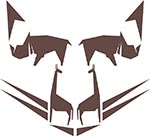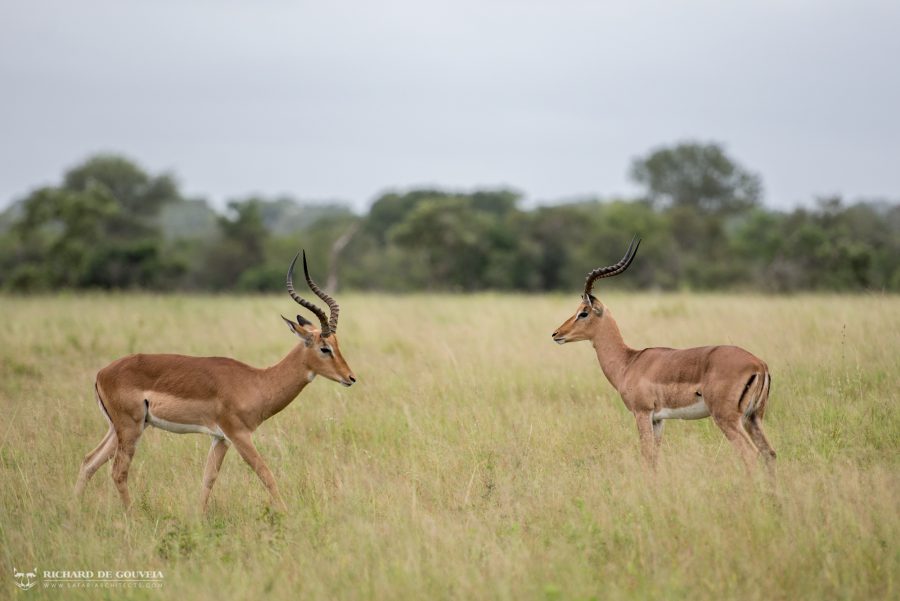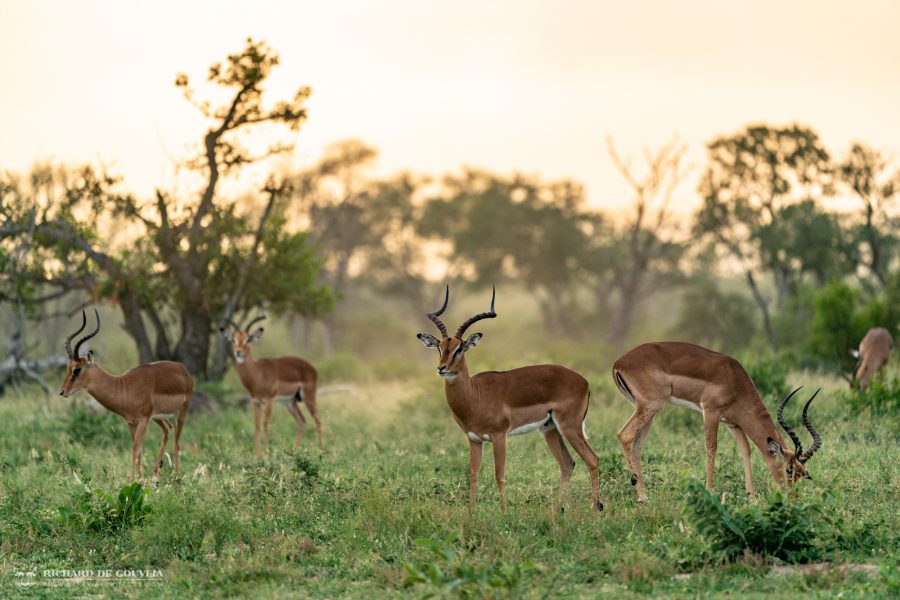Thought Piece: The Impala Rutt
The first full moon at the end of March, or beginning of April, signals the beginning of “the rutt”. This is the time of year where, as the days get shorter and the nights get longer, impala rams’ testosterone levels skyrocket and the fight for territory and dominance over female herds begins…
The dominant males will dispatch any competition, forcing them into bachelor herds. The noise of the rutt can be herd for long distances, as the males proclaim their territories with snorts and growls whilst chasing other males out. The victors then take charge of their herds of females and attempt to mate with as many as possible, never mating with the same female twice.
Unfortunately, although happy to have won over territory and a fertile female herd, the victors are so busy protecting their group, chasing away other males and mating, that they hardly has any time to eat or groom themselves. Tick loads can double, causing the male to lose condition quickly which in turn grants his competitors the opportunity they need to push him out and get some of their genetics back into the mix. During the height of the rutt, males can keep their territory for as short as only eight days before being pushed out and replaced by another opposing male.
Although chased away, these male won’t just slump their head in defeat, but will instead start feeding and conditioning himself again until he is ready to compete for his herd once more. The cycle continues with males coming in and out routinely, yet this is in turn extremely important for genetic diversity. If you only have a few males that challenge for a herd, only their genetics will be available to the females, meaning that any genetic downfalls will be passed on without room for much improvement. Nature, however, has built in a mechanism by which they can mix up the so-called “genetic pot”. Wild dog packs mainly prey on impala and can kill up to three in a day which means heightens the possibility of a strong gene variety. Wild dogs are also known as coursers and will chase their prey over huge distances, splitting impala herds and sending them into areas which they wouldn’t normally move into by choice. This then allows different genes to be moved into new areas, ensuring that the survival of the fittest continues.
Written by: Richard De Gouveia







